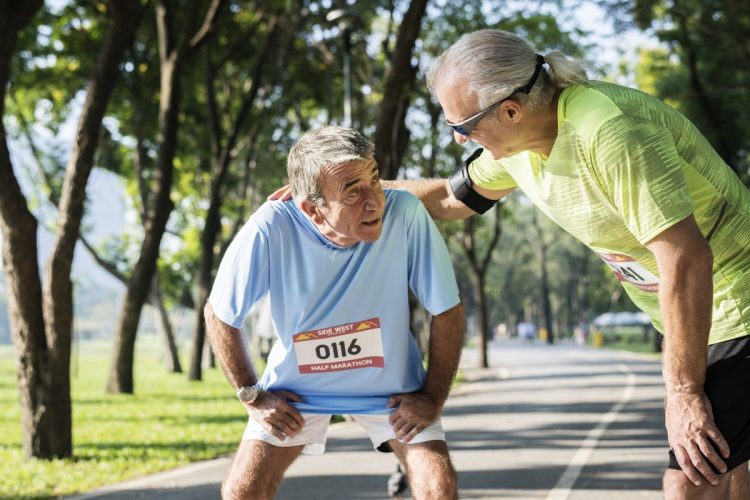

Adding treadmill HIT to inpatient stroke rehabilitation has been shown to significantly improve gait outcomes. Locomotor high-intensity interval training (HIT) is a promising new strategy for stroke rehabilitation that uses bursts of maximum speed walking alternated with recovery periods, which allows individuals to sustain higher aerobic intensities than physiologically possible with continuous exercise. However, the presence of neurologic gait impairments in individuals post-stroke can make it challenging to reach this vigorous intensity. 40–60% heart rate reserve) may be a “critical ingredient” for greater and more rapid improvements in walking capacity. Recent evidence suggests that a more vigorous training intensity (> 60% vs. Thus, to improve walking capacity post-stroke, there is a critical need for a more efficacious and time-efficient intervention. In addition, most laboratory-based MAT protocols have involved training durations (typically 45 min, 3×/week for 6 months) beyond what is possible in clinical practice due to issues related to patient adherence and reimbursement. In particular, MAT has shown small and inconsistent effects on gait speed, a primary outcome of stroke rehabilitation. However, this approach has known limitations that have restricted its adoption in most clinical stroke rehabilitation settings. Compared to conventional rehabilitation approaches and lower intensity training, MAT has shown significant benefits across a range of outcomes, such as improvements in aerobic fitness, walking capacity, and overall disability. To address impairments in walking capacity, current exercise recommendations and stroke rehabilitation guidelines recommend moderate-intensity aerobic training (MAT). Thus, improving walking capacity is a primary goal of rehabilitation after stroke. Limited walking capacity is a major barrier to recovery after stroke, and less than 10% of stroke survivors have adequate walking speed and endurance to allow for normal daily functioning, such as grocery shopping and occupational requirements.

Registered on November 30, 2018.Īpproximately 6.6 million Americans are currently living with chronic sequelae of stroke of which a primary impairment is reduced walking capacity.
Moderate intensity exercise how to#
Thus, the results of this study will inform future stroke rehabilitation guidelines on how to optimally improve walking capacity following stroke.

Moderate intensity exercise trial#
Data needed to justify and design a subsequent definitive trial will also be obtained. This study will provide fundamental new knowledge to inform the selection of intensity and duration dosing parameters for gait recovery and optimization of aerobic training interventions in chronic stroke. The primary outcome (walking capacity) and secondary outcomes (self-selected and fast gait speed, aerobic fitness, and fatigue) are assessed prior to initiating training and after 4 weeks, 8 weeks, and 12 weeks of training. Main eligibility criteria are age 40–80 years, single stroke for which the participant received treatment (experienced 6 months to 5 years prior to consent), walking speed ≤ 1.0 m/s, able to walk at least 3 min on the treadmill at ≥ 0.13 m/s (0.3 mph), stable cardiovascular condition (American Heart Association class B), and the ability to walk 10 m overground without continuous physical assistance. Using a single-blind, 3-site randomized controlled trial, 50 chronic (> 6 months) stroke survivors are randomly assigned to complete 36 locomotor training sessions of either high-intensity interval training or moderate-intensity aerobic training. In this study, we hypothesize that locomotor high-intensity interval training will result in greater improvements in walking capacity than moderate-intensity aerobic training. However, the relative benefits and risks of high-intensity interval training and moderate-intensity aerobic training remain poorly understood following stroke. Locomotor high-intensity interval training is a promising new strategy that has shown significantly greater improvements in aerobic fitness and motor performance than moderate-intensity aerobic training in other populations. Current exercise recommendations and stroke rehabilitation guidelines recommend moderate-intensity aerobic training post-stroke. Stroke results in neurologic impairments and aerobic deconditioning that contribute to limited walking capacity which is a major barrier post-stroke.


 0 kommentar(er)
0 kommentar(er)
